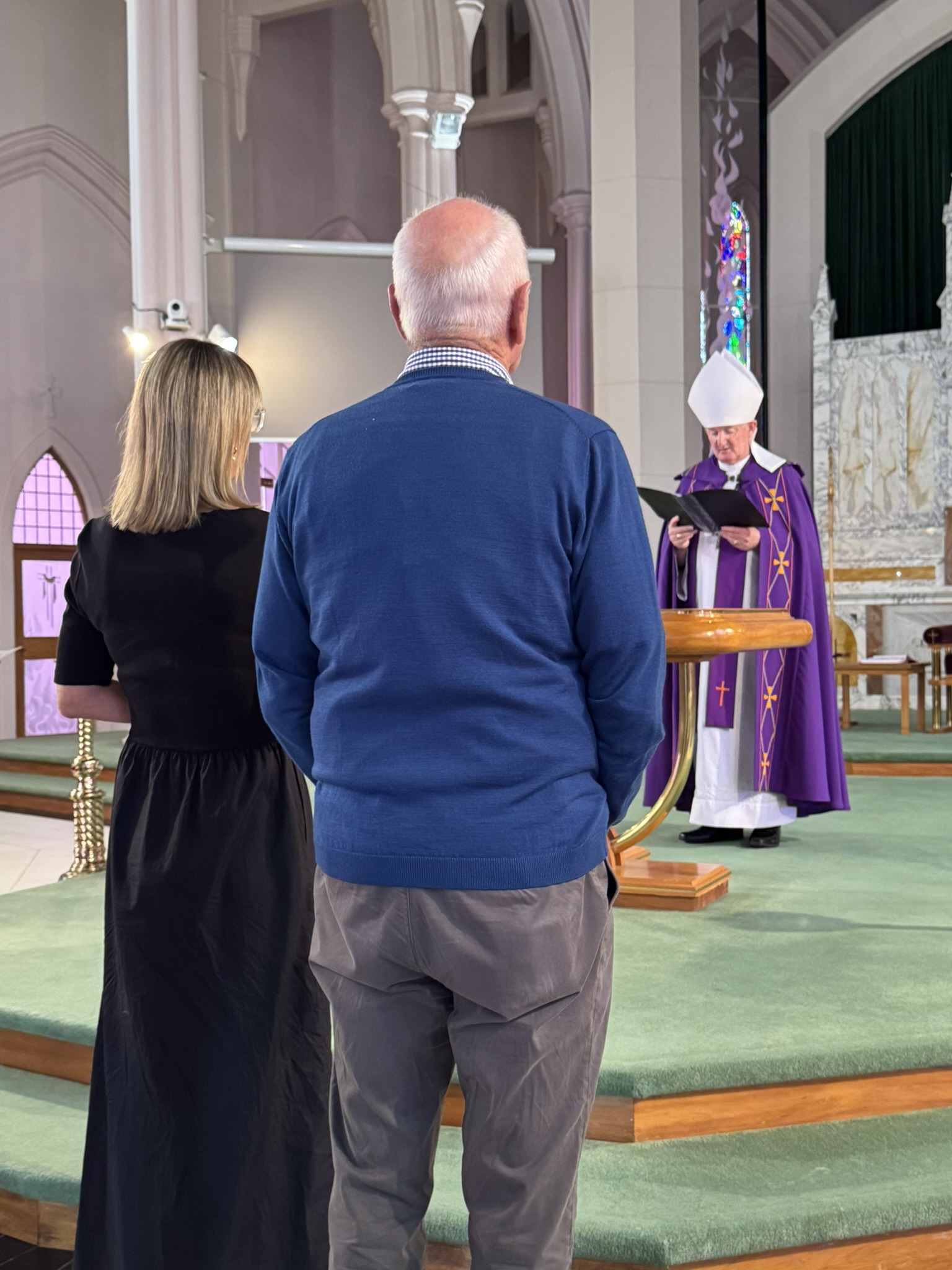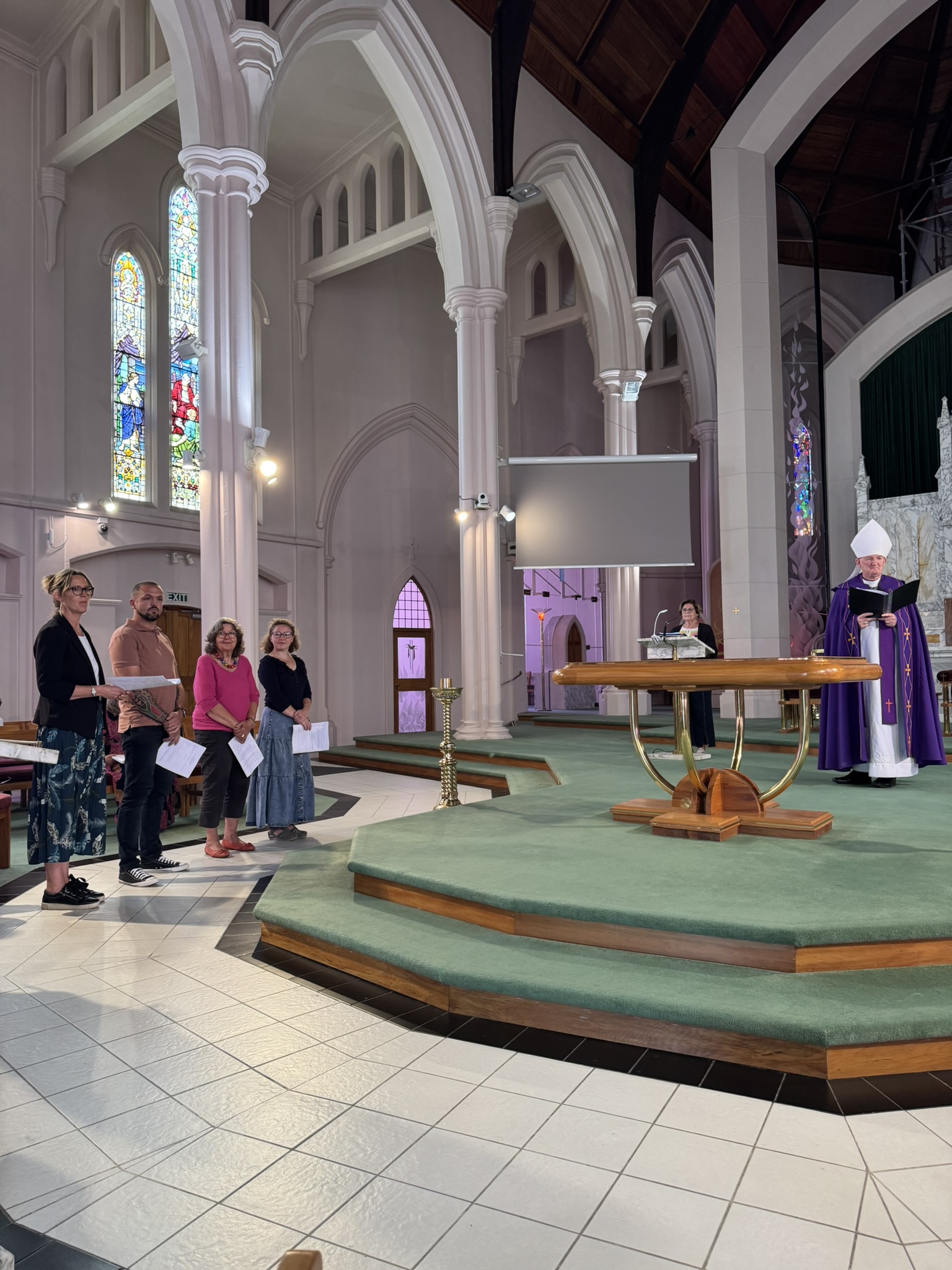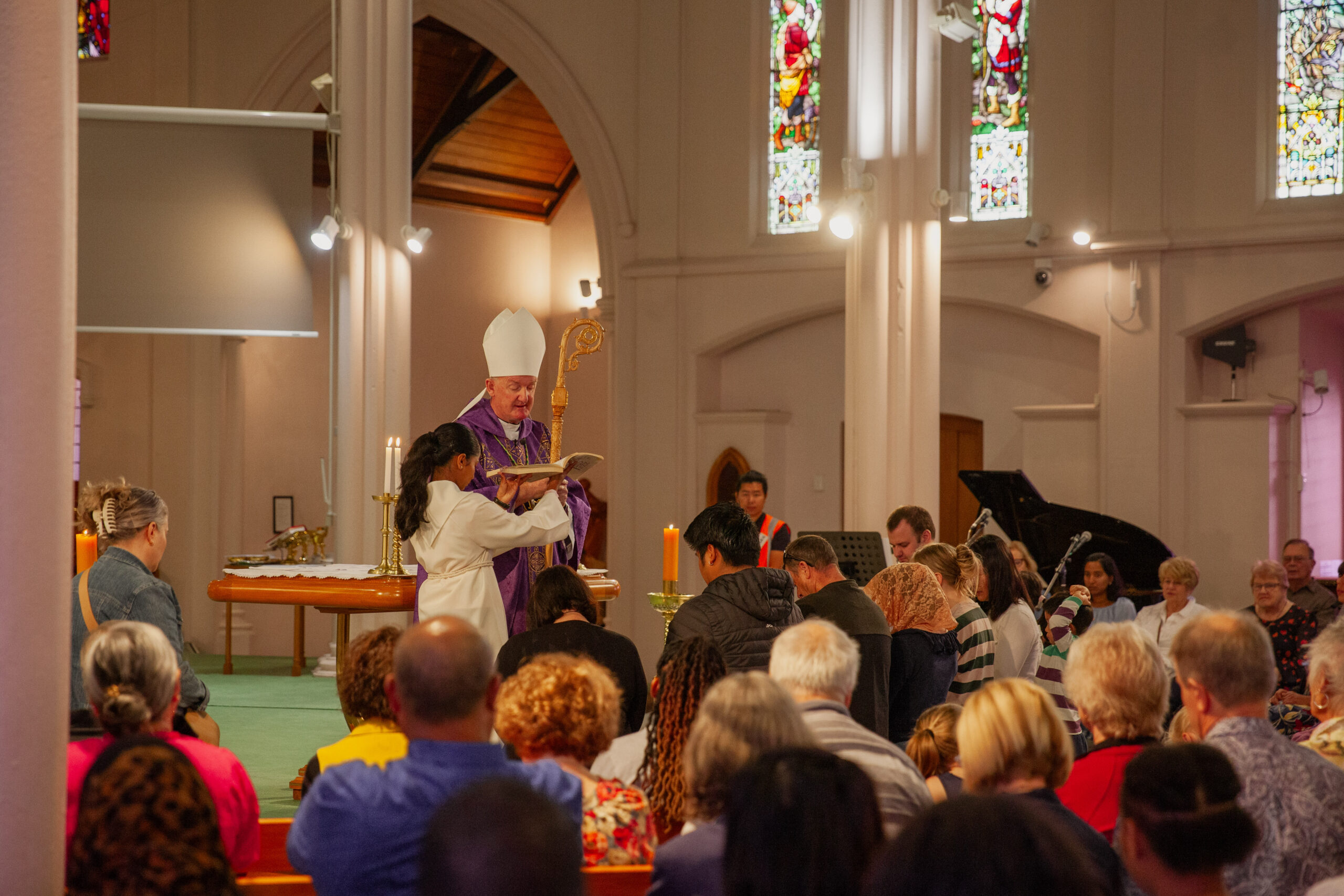On the First Sunday of Lent, catechumens and candidates from across the Palmerston North Diocese gathered at the Cathedral of the Holy Spirit for the Rite of Election with Bishop John. They were joined by their godparents, sponsors, and families as they took this important step on their journey toward full initiation into the Catholic Church at Easter.
The Rite of Election is a significant milestone in the Rite of Christian Initiation of Adults (RCIA) process. It marks the moment when catechumens—those who have not yet been baptised—are officially declared “the elect,” chosen by God and affirmed by the Church as ready to receive the Sacraments of Initiation at the Easter Vigil. Candidates, who have already been baptised in another Christian tradition, also take part as they continue their preparation to be received into full communion with the Catholic Church.
During the Rite, the catechumens’ names are presented, and their godparents testify to their readiness. The Bishop then formally declares them as the elect, inviting them to enter into the final period of intense spiritual preparation known as Purification and Enlightenment. This Lenten journey is a time of deep reflection, prayer, and conversion as they prepare to fully embrace their new life in Christ.
Bishop John spoke about the significance of this journey, saying, “the Rite of Election is a beautiful opportunity to walk with people who are discovering the truth of Jesus Christ, the truth of our Catholic faith, and the consolation of friendship with Christ. I always gain so much energy and consolation from walking with those who are about to enter the Church.”
This year, there were catechumens and candidates from Palmerston North, Dannevirke, Hastings, and New Plymouth. Some individuals from New Plymouth were unable to attend in person, and Bishop John gave special permission for Fr Simon to celebrate the Rite of Election with them locally.
As part of this journey, the elect also take part in the Scrutinies, which are celebrated on the Third, Fourth, and Fifth Sundays of Lent. These special rites include prayers of intercession and a minor exorcism, asking for God’s grace to strengthen them against sin and temptation. Following tradition, they leave the church after the Liturgy of the Word. This practice acknowledges that, as they are not yet baptised, they are still preparing to fully participate in the Eucharist.
After the ceremony, attendees shared in a time of fellowship over afternoon tea, celebrating the beginning of this sacred season of preparation together.
Deborah Thompson Jones is a Cathedral of the Holy Spirit parishioner, wife, mum, birth doula, and catechumen. The daughter of church leaders, she grew up in a nondenominational charismatic background and has been deeply involved in Christian ministry, from leading worship to planting churches. Her journey has taken her through various ecclesial experiences, but at the heart of it is her conviction that Jesus is truly present in the Holy Sacrifice of the Mass.
Below, she shares a reflection on how the wedding at Cana offers a profound insight into the Blessed Mother’s role in salvation history and the nuptial meaning of the Mass.
Thank you, Jesus, for turning water into wine!
As a child, I routinely added this prayer to our dinner grace, though I couldn’t have explained why. For years, I was inexplicably fixated on Jesus’ first public miracle. Today, I see it with new eyes—not only as a sign of His power but as a profound revelation of the Blessed Mother’s role in salvation history.
Many readers will recognise this moment as the first recorded instance of Mary’s intercession with her Divine Son. But what strikes me most is the setting of her plea: a wedding feast.
As I begin my new life as a Catholic, I find deep consolation in the nuptial meaning of the Mass. Each Eucharistic meal is the consummation of Christ’s gift of Himself to His Bride. Yet, at some point, many Christians have wondered whether this celebration feels a little dry. Some have even sought joy elsewhere, drawn to places where the wine seems to flow more freely.
But having journeyed through various ecclesial experiences, I am confident that someone is always watching—someone who sees where hope has waned. In her maternal mercy, Mary turns to her Son with radical trust, declaring, “You can do something about this!” Then, she turns to us with a familiar exhortation: “Do whatever He tells you.”
And so, just when things seem uncertain, the stage is set for an outpouring of the very finest Our Lord has to offer. One guest turns to another and marvels, “They have saved the best till last!”
Mother Mary cares both for the honour of the Bride and Groom and for the joy of the wedding guests. She stands faithfully at the banquet door, ushering in and welcoming back all who share her luminous vision of the Wedding Supper of the Lamb.
It is my privilege to answer her call definitively this Easter.






